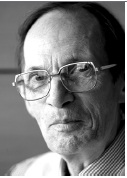Tokyo is coming back. It is turning into a city where, all of a sudden, as far as I am concerned, there is creativity. It used to be like this in the 1960s when I first came here. I remember a plethora of shows at small, new art galleries, and a mass of new writing.
It was a great time. The yen was not too high. Foreign artists and writers and musicians poured in here to work.
I recall, still, a couple of short films that Donald Richie made back in the ’60s. Startling images from those efforts of his linger in my mind, when all memory of most commercial movies I saw over the decades has vanished from my head. I was similarly impressed by an experimental documentary shown at the Foreign Correspondents Club the other night by Raffaela Scaglietta.
Ms. Scaglietta, a young Italian filmmaker who lives in Tokyo (and is married to a British journalist, Jonathan Annells), showed her 59-minute work at one of those movie nights organized by Edwin Karmiol at the FCCJ. I missed the first few minutes, slightly to my annoyance, having had something to do at home, and got behind.
But I quickly settled down in a crowded room, with standing room only. At a given moment Edwin came up to me to point out an empty chair, but I preferred to stand at the back looking over Raffaela’s shoulder as she sat by the projector, occasionally adjusting the sound on a track composed of danceable music by an Italian group named “A Legend Called Hero” that Raffaela fell in with in Brussels.
Watching the film, I found myself caught up in the flow of images. Raffaela’s movie bounces back and forth from New York to Tokyo to Seattle to Brussels in pursuit of a theme, and quickly focuses as one person’s view of our troubling world.
A freelance journalist, Raffy was drawn by those big anti-globalization street demos at the WTO meeting in Seattle the year before last. Using a handhold camera, she walked in and out of the lines of young people, chanting slogans as they marched in the streets against a world dominated by multinational companies— as they see it.
Her gaze rests on uniformed police with outsize, bulbous rear-ends and slow reactions—too sluggish to pick up on the fact that they are being filmed while leaning on an outnumbered young demonstrator or two.
The prime image in the film is Raffaela’s own face. With the camera moved up close to her nose, one sees a slightly distorted image. An almost querulous, self-interrogating pair of eyes, accompanying this sharp beak of a nose, look into the camera in a troubling echo of a home movie—and then hold the picture tight, not letting it go.
And suddenly this image is no longer diurnal—the face of someone we see around the Press Club day after day—but urgently interrogative. I was very taken by the freedom Raffaela found for herself by concentrating on herself—as on the small apartment where she lived in lower Manhattan from 1999.
I was enchanted by the way she let the camera rest, for a long time, on a set image—a picture of a rose propped up on a chair; a long underground passageway, at Frankfurt Airport.
As Raffaela’s film ended, there was a burst of spontaneous applause of the kind that you rarely hear in the Press Club. All of a sudden there was a roomful of people all but standing on their chairs to salute Raffaela.
A couple of FCCJ members then asked questions. How was it that her film, which had been announced as a work on the subject of genetically modified food, had somehow changed into something else—one person’s examination of her soul?
The fact is Edwin had put out a circular stating that we were to see a documentary on Raffaela’s attempts to report a story on the topic of genetically modified food, as seen from Brussels—and how her Italian colleagues disrupted her work. The two members—using the Q & A time after the film was shown—were a little bit indignant. I could see their point.
OK, but on the other hand the focus of the film had to be Raffaela herself, and what she saw, traveling the world, helped by a Fulbright EU-USA grant as it happened, with a hand-held camera running all the time—wondering what her role is supposed to be as a freelance journalist in a world where such hacks do not necessarily have the clout to get interviews.
All of which takes me back 33 years to 1969. At that time an Italian friend of mine, Paolo Carosone, an artist, showed his work at the Minami Gallery in Kyobashi—then the top small modern art venue in Tokyo. Paolo rigged up an electronic device that picked up brain waves and played music. Somewhere I have a photo taken of me sitting in the Minami Gallery with this headset on, wearing a dark suit and listening to the “sound” of my own brain.
I have lost touch with Paolo, who was working with the composer Luciano Berio at the time—I do not know if he still resides, as he did for decades, at via Slataper in Rome. This is not the least good thing to come out of Raffaela’s film for me. Unwittingly, she is causing me to get back in touch with someone who was a great figure in my life.
It’s just fine that Tokyo, once again, is serving as a place of residence for new artists, with experiments to conduct.
What will Raffaela move onto next, I wonder? Her next film is to feature the Silk Road in China and the dreams of women she encounters on the road up there. Still, I hope that she and Jonathan will stay on in Tokyo. As I started by saying, this city is once again a focus of creation—at least as seen from these digs of mine.









